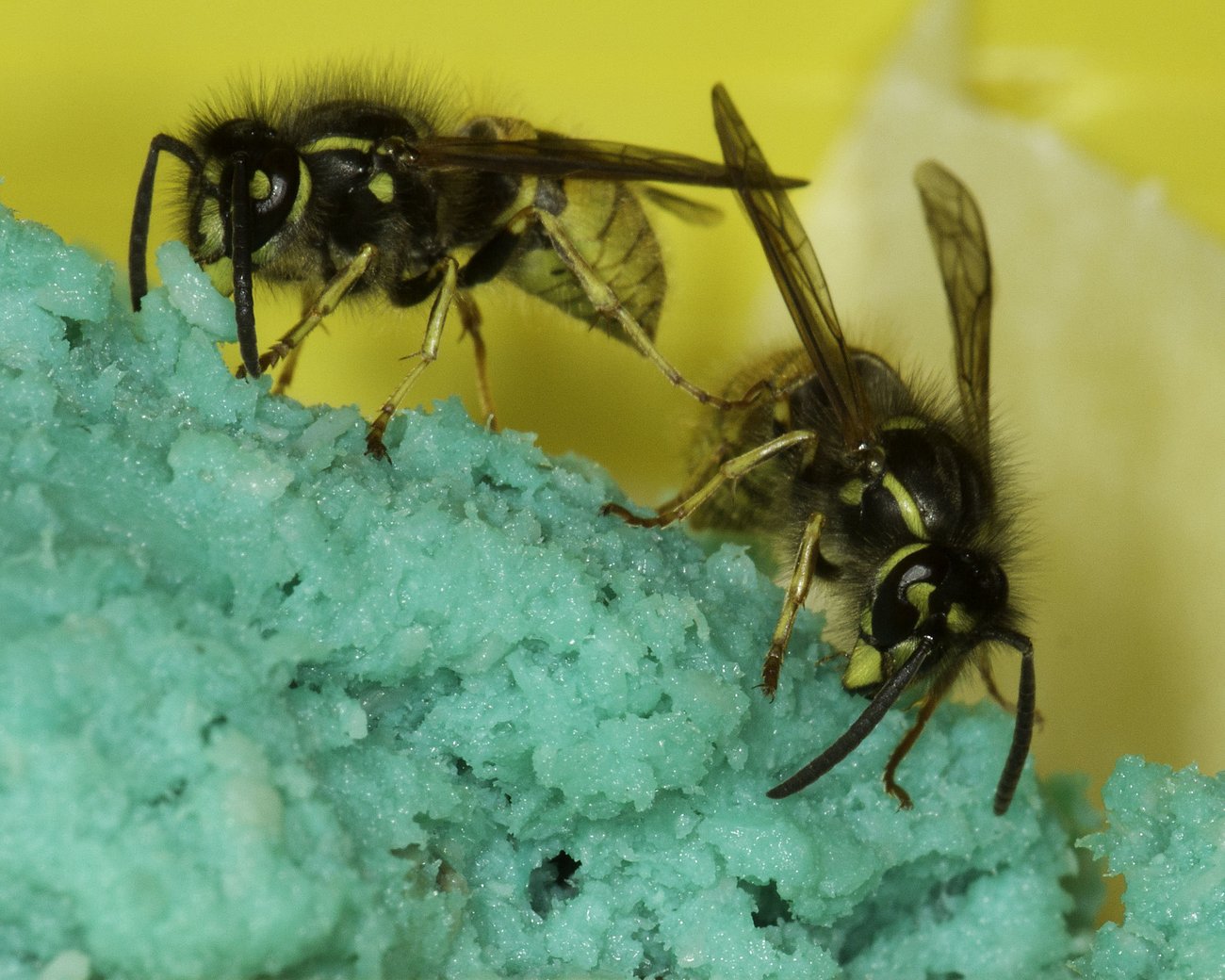
They sting, they take over properties and keep pets and people away for fear of the aforementioned stings, and at least four types of them are invasive species that are killing our native wildlife. Wasps.
Don’t think wasps are all that common in Aotearoa? Here’s a fun fact: the world’s largest recorded wasp nest was discovered at Waimauku (near Auckland). It was only 3.75 metres tall and 1.7 metres wide.
While they have many benefits for ecosystems, wasps are also of course a challenge for conservation efforts. But with so many of the insects around, how does one effectively wage war against them? Guess what: there’s a Kiwi–designed pest bait that’s being hailed as a “game changer” in the fight against invasive wasps.
In 2015, Nelson-based Richard Toft won a WWF Conservation Innovation Award for the development of Vespex, a protein-based wasp bait to kill both common and German wasps. The $25,000 grant allowed Toft and his team to move on from making small amounts of bait for research to commercial production, and trial systems for use by community conservation groups.
The bait was 25 years in the making, Toft says. “The bait contains a very potent, slow-acting insecticide, and the bait is completely unattractive to bees,” he explains. “Wasps take the bait from bait stations to feed their larvae, so the nests are destroyed without us needing to find them.”
Containing the common insecticide fipronil, Vespex does not attract bees. As wasps feed it to their larvae, many nests can be destroyed from a single bait station. DOC trialled Vespex over 5,000 hectares at five South Island sites in late 2014 and early 2015. Within a week of the first application, wasp activity was reduced by more than 95 percent.

Eliminating the need for labour-intensive wasp hunts represents a general shift towards a more “autonomous” approach to conservation. Recently, Kiwibank and the Department of Conservation (DOC) launched a three-year renewable partnership that will see Conservation Dogs at the frontline of DOC’s work in wilderness areas of Aotearoa, helping find protected species and capture unwanted pests as part of a drive to make New Zealand predator-free by 2050.
A stewardship system has been developed between DOC and BASF New Zealand that makes Vespex available to public and private sanctuaries, conservation groups, councils, beekeepers, foresters, farmers, tourism enterprises, recreation groups, vineyards, and orchards. All they have to do is visit the website Merchento and order it. A 600g pot sells for $85 (excluding GST), while a 1.5kg pail is $160 (GST not included).
Toft says sales have been steady so far. “Uptake was excellent in the first season, with well over 1,000 approved users.” Sales have ranged all the way from Kaitaia in the north all the way down to Stewart Island, he claims.
Conservation Minister Maggie Barry certainly thinks it’s an innovation that has potential. “Breeding in vast numbers, wasps monopolise honeydew, which is a key food source for the kaka, tui and bellbird among other native animals,” she said in November last year after Toft won the Conservation Innovation Award. “They pose a threat to native insects and are a continual annoyance, not to mention a health risk, to people visiting the conservation estate.”
There’s numbers to back up her claims. Wasps have been estimated to cost around $120 million a year through the disruption they cause to bee pollination and lost honey production. They also cost about $1 million a year in healthcare costs, mostly for people being stung by wasps.
But there’s economic benefits to wasps, too. Wasps, live eels and capsicums are just some of the short shelf-life goods that have seen a 150 percent increase in exports to the United States in the past few months, according to industry figures and data from Hawaiian Airlines.
Tim Strauss, vice president of Hawaiian Airlines’ cargo division, says the market demand for a diverse range of products is increasing rapidly as Kiwi producer s fill seasonal gaps in the northern hemisphere, and are expanding the market for live produce in the US. “The fastest growing segment for the air cargo industry has been in perishable goods,” he explains. “Timely and dependable transit creates huge demand and new market opportunities for New Zealand farmers, fishermen, and scientists alike who all share in the benefits of access to customers well beyond the borders of their own country.”
WWF-New Zealand is now searching the country again for new ideas that can change the way we tackle conservation. Entries for the 2016 Conservation Innovation Awards open on 26 September, and run until 14 October. Supported by The Tindall Foundation, a prize of $25,000 will be awarded to each of the three winning entries.




